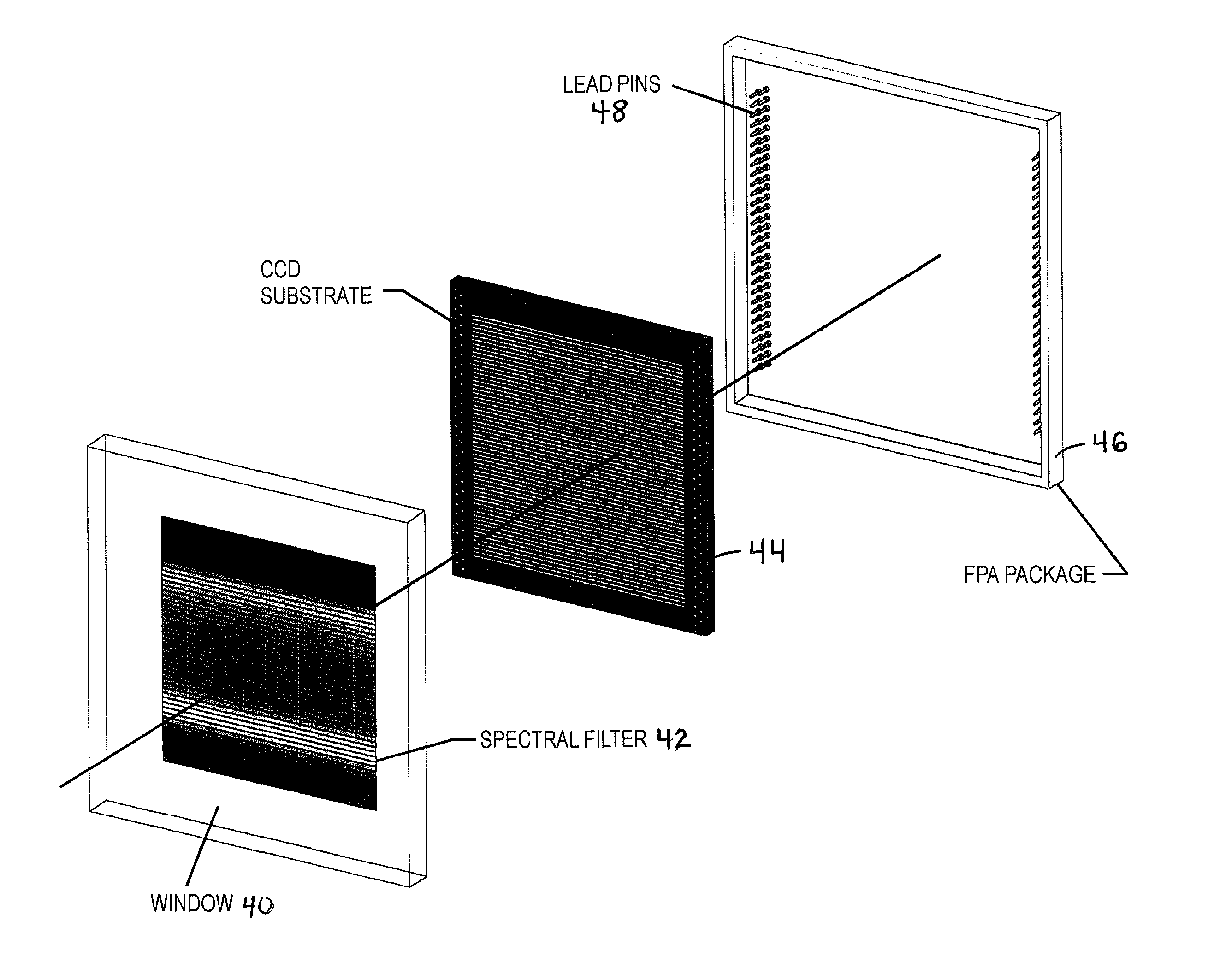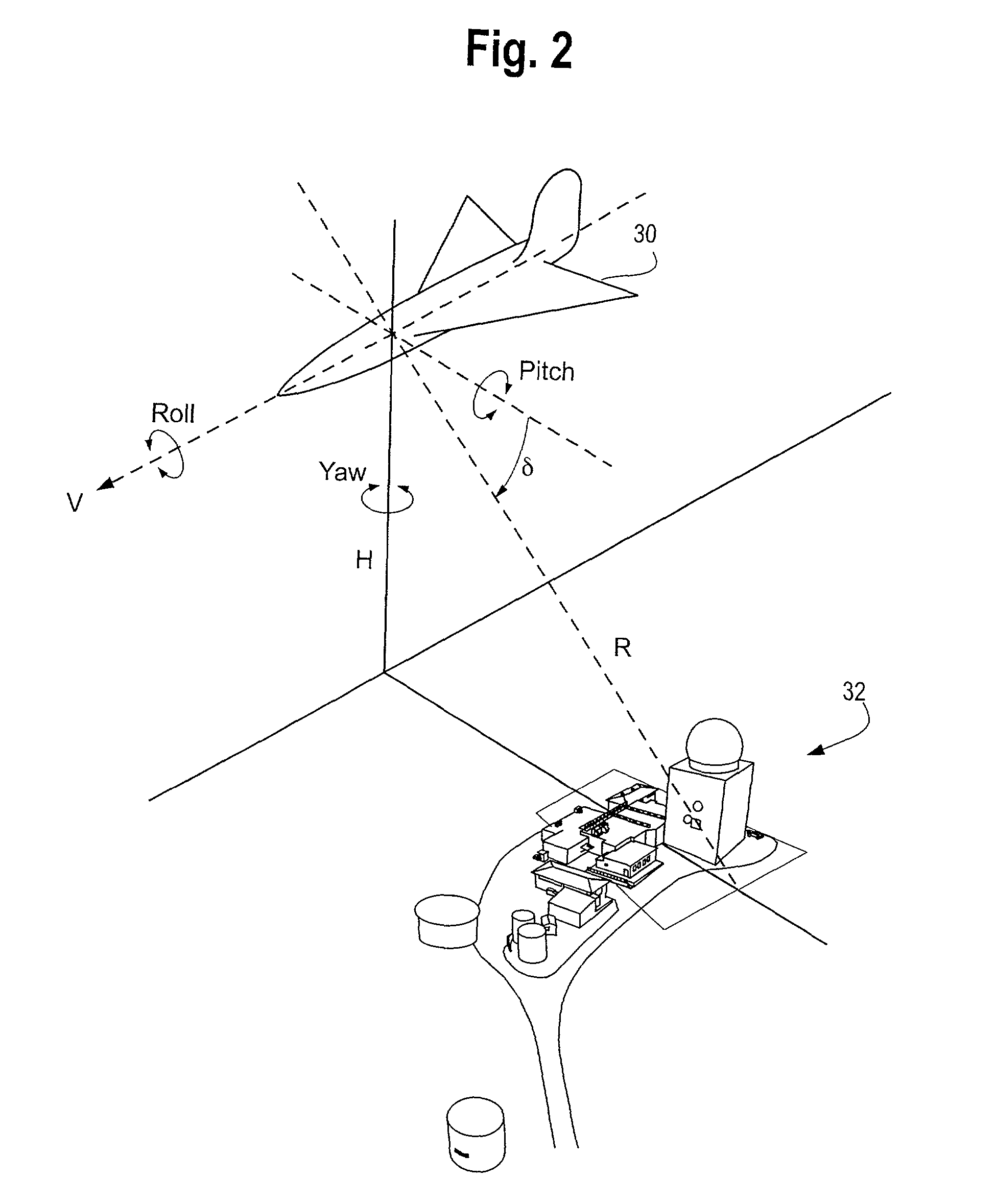Multispectral or hyperspectral imaging system and method for tactical reconnaissance
a multi-spectral or hyperspectral imaging and tactical reconnaissance technology, applied in the field of hyperspectral and muti-spectral imaging systems, can solve the problems of limited exposure time and spatial smearing, poor spatial resolving power of the system, and high undesirable and unusable applications in high-speed reconnaissance aircra
- Summary
- Abstract
- Description
- Claims
- Application Information
AI Technical Summary
Problems solved by technology
Method used
Image
Examples
first embodiment
[0067] A second alternative embodiment of this invention is disclosed which takes maximum advantage of the surface area of a silicon detector array to maximize the number of hyperspectral bands detected by varying the number of TDI columns for each of the sub-arrays according to the a priori knowledge of the spectral response of the Silicon detector material used in the fabrication of the array. Creating sub-arrays with shorter TDI columns in the higher responsivity wavelengths serves to vary the length of the columns of each sub array so as to normalize the signal response of the array to the spectral information and maximize the number of hyperspectral bands detected. Shortening the physical length of the TDI columns for some of the sub-arrays does not limit the user to clocking those sub-arrays to less TDI required according to the invention.
[0068] A third alternative embodiment of the invention varies the TDI coefficients, that is, the number of pixels through which the charge i...
fifth embodiment
[0070] the invention utilizes independent clocking control of specific TDI sub-arrays to provide enhancement in a specific spectral band or group of bands. For example, for some targets, certain specific spectral bands are associated with specific targets (such as particular bands associated with the emissions from a chemical weapons plant), and the array is programmed or designed to increase the signal collection (number of rows of TDI clocking) for those sub-arrays imaging in the portions of the spectrum corresponding to these targets, perhaps at the expense of other portions of the array. The purpose of this embodiment is to increase the ability of the array to detect targets with a characteristic spectral signature. The incident energy may be more efficiently collected in the spectral regions of known targets using this technique. In other words, the capability may be used to locate targets exhibiting certain spectral attributes. These attributes are designed to be imaged with g...
PUM
 Login to View More
Login to View More Abstract
Description
Claims
Application Information
 Login to View More
Login to View More - R&D
- Intellectual Property
- Life Sciences
- Materials
- Tech Scout
- Unparalleled Data Quality
- Higher Quality Content
- 60% Fewer Hallucinations
Browse by: Latest US Patents, China's latest patents, Technical Efficacy Thesaurus, Application Domain, Technology Topic, Popular Technical Reports.
© 2025 PatSnap. All rights reserved.Legal|Privacy policy|Modern Slavery Act Transparency Statement|Sitemap|About US| Contact US: help@patsnap.com



